It's fun to watch how quickly things are improving in home robotics right now. Sunseeker's new X5 robo-mower isn't perfect, but it does an impressive job with complex, multi-zone lawns thanks to its RTK-GNSS positioning system.
Before about 2019, if you wanted a robot to mow your lawns, you needed to root around in the dirt installing boundary wires – a task that could get quite onerous with a decent-sized yard. Most models bounced around in random directions, leaving rakish tufts of long grass poking up in places where chance hadn't pointed the mower yet.
But we're now in the age of AI vision and machine learning, not to mention high-precision real-time kinematic (RTK) satellite positioning. Boundary wires are relics of a bygone age, and robo-mowers are now capable of mapping out lawns and tending to them so systematically that they're taking some of the juiciest jobs in the lawn-mowing game – like manicuring the hallowed fairways of PGA tour golf courses.
RTK positioning was first introduced to robo-mowers with Husqvarna's EPOS series in 2020. Regular consumer-grade GPS devices like the one in your smartphone can only tell you a location within an error radius of about 16 feet (4.9 m) – nowhere near good enough for a mower.
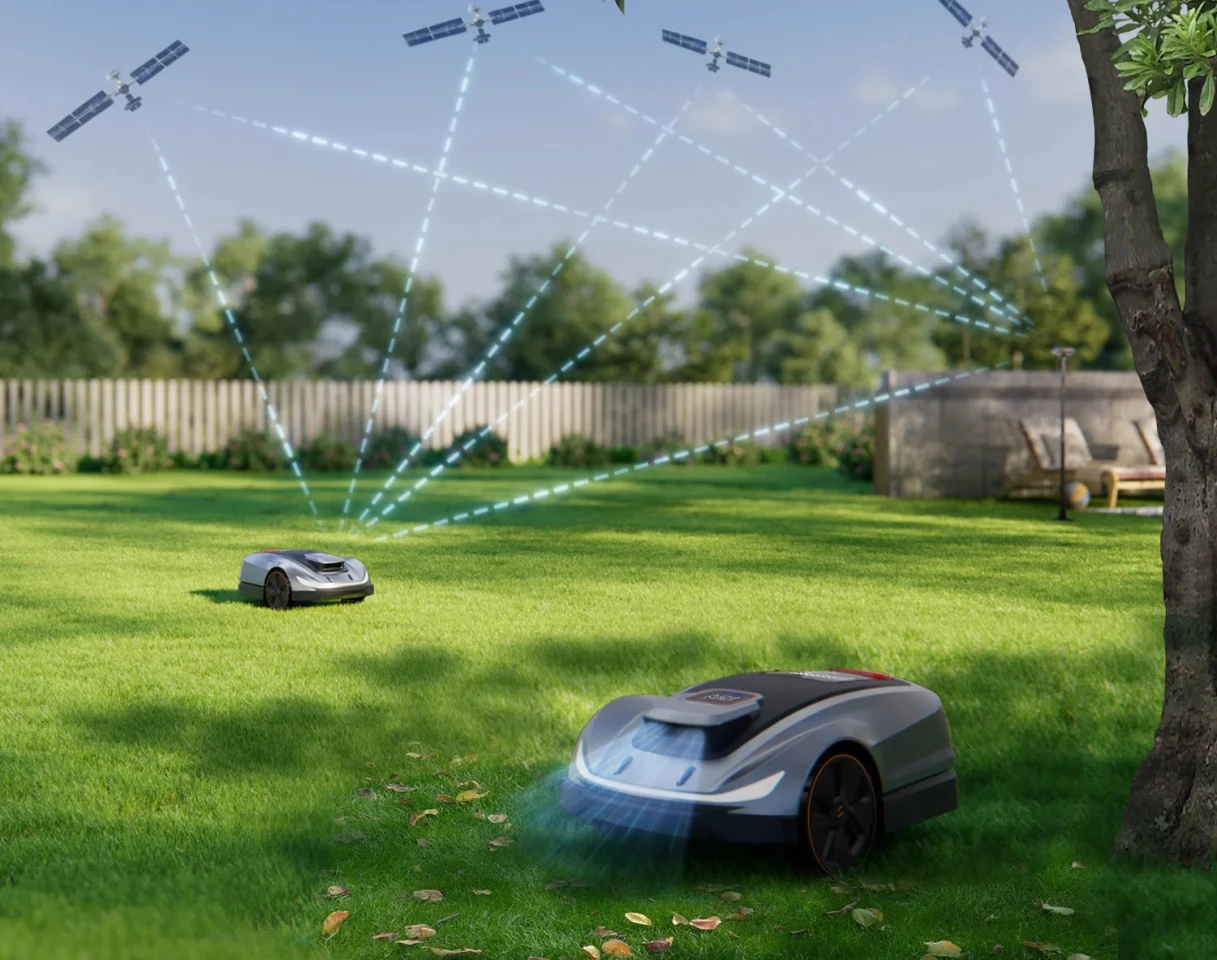
With RTK, you set up a base station somewhere close by, and then the base station and the roaming robot can compare the phase differences in the radio signals they're getting from various GPS satellites, do some complex math and wind up with an accuracy of more like an inch (2.5 cm). Now we're talking.
The Sunseeker X5 combines RTK positioning with video-based SLAM (simultaneous localization and mapping) from a stereo camera array you can see peeking up from the sloping "hood" of the sporty-looking robot chassis, as if WALL-E's head was also a hot rod's supercharger.
That means you can plonk it down in a "work zone" and let it go to town figuring out where the boundaries of the lawn are by itself – or else you can engage an awkward, laggy remote control mode via Bluetooth from your phone and simply drive it around the edges. You can also nominate "corridors" of non-lawn area like paths and concrete and whatnot, which the robot can use to travel between work zones.
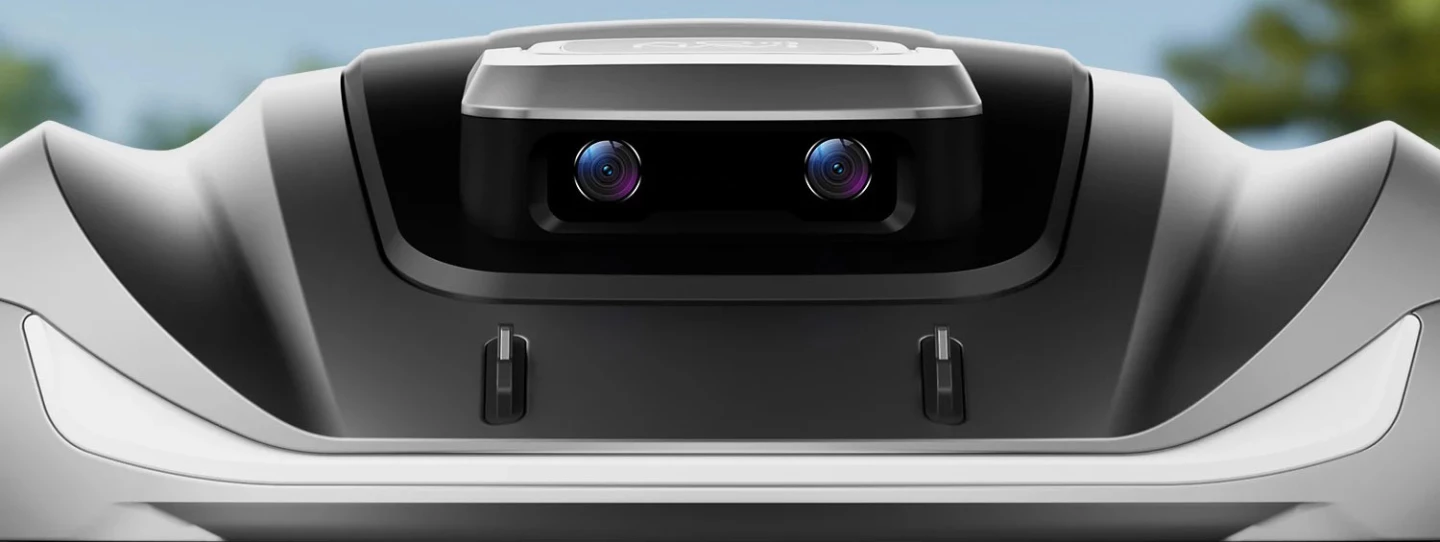
So, with the RTK base station antenna set up on the crumbling roof of my back yard car port, I showed the robot around our split back lawn, then took it up the side path, through the gate and around to map out the two areas of our front lawn. Feeling sporty, I then showed it how to get out the front gate and over to the nature strip (which is the strip of grass between the sidewalk and the street for those outside Australia).
Then, I customized the five zones it had mapped out, choosing a neat and efficient direction for the robot to stripe each lawn in, and let the little Sunseeker get to work. Absent the random Roomba-style bouncing around we witnessed with, for example, last year's Worx Landroid Vision, it cruised through the 220-sq-m (2,370-sq-ft) of those five work zones in about an hour and 20 minutes, then sauntered back in the front gate, down the side path, through the side gate, and back to its little charging station in the back yard.
A non-RTK equipped machine would've had to be hand-delivered to the front yard and nature strip. This is a terrific step forward.
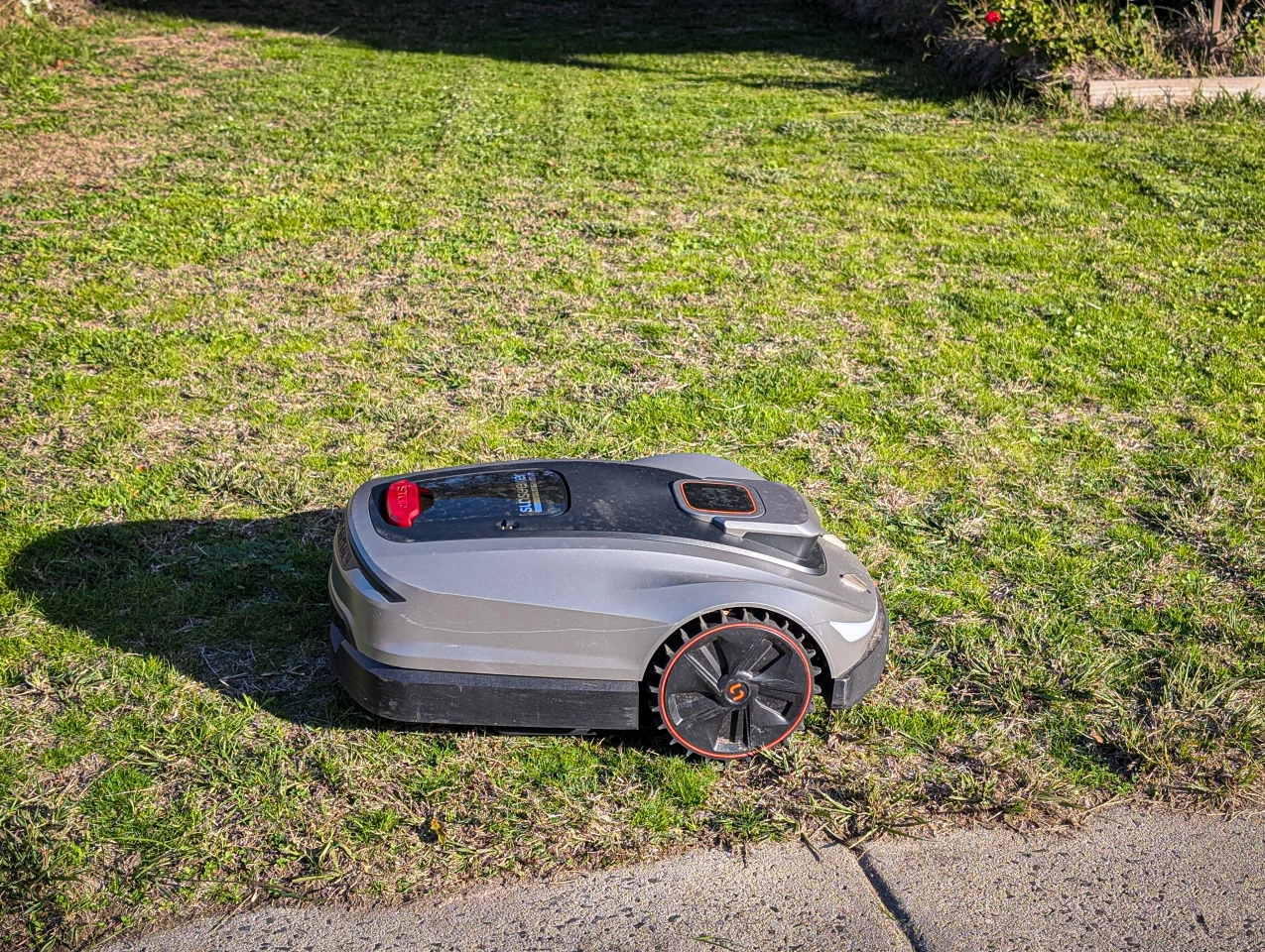
As Sunseeker's second-biggest mower, the X5 is designed to handle lawns 10 times the size of ours, with as many as eight separate zones. That's per map – you can totally drag this machine down to the holiday house, make an extra map for that and have it keep things tidy for you there, too – provided you're willing to move that RTK base station, then put it back exactly where it was when you return home.
Where it dares to go, the work it does is superb; with a little regular attention, the grass looks amazing. This mower is exceptionally quiet, it can handle a pretty decent slope up to about 30°, and you can adjust the height of its 8.6-inch (22-cm) diameter razor-bladed cutting disc for lawn heights between 1.6 to 3.2 inches (4 to 8 cm).
I say where it dares, because ... well, there are certain areas where it dares not. One corner of an otherwise unobstructed bit of back lawn remains an absolute no-go zone, despite the fact that I put it in remote control mode and showed it right to the edges.
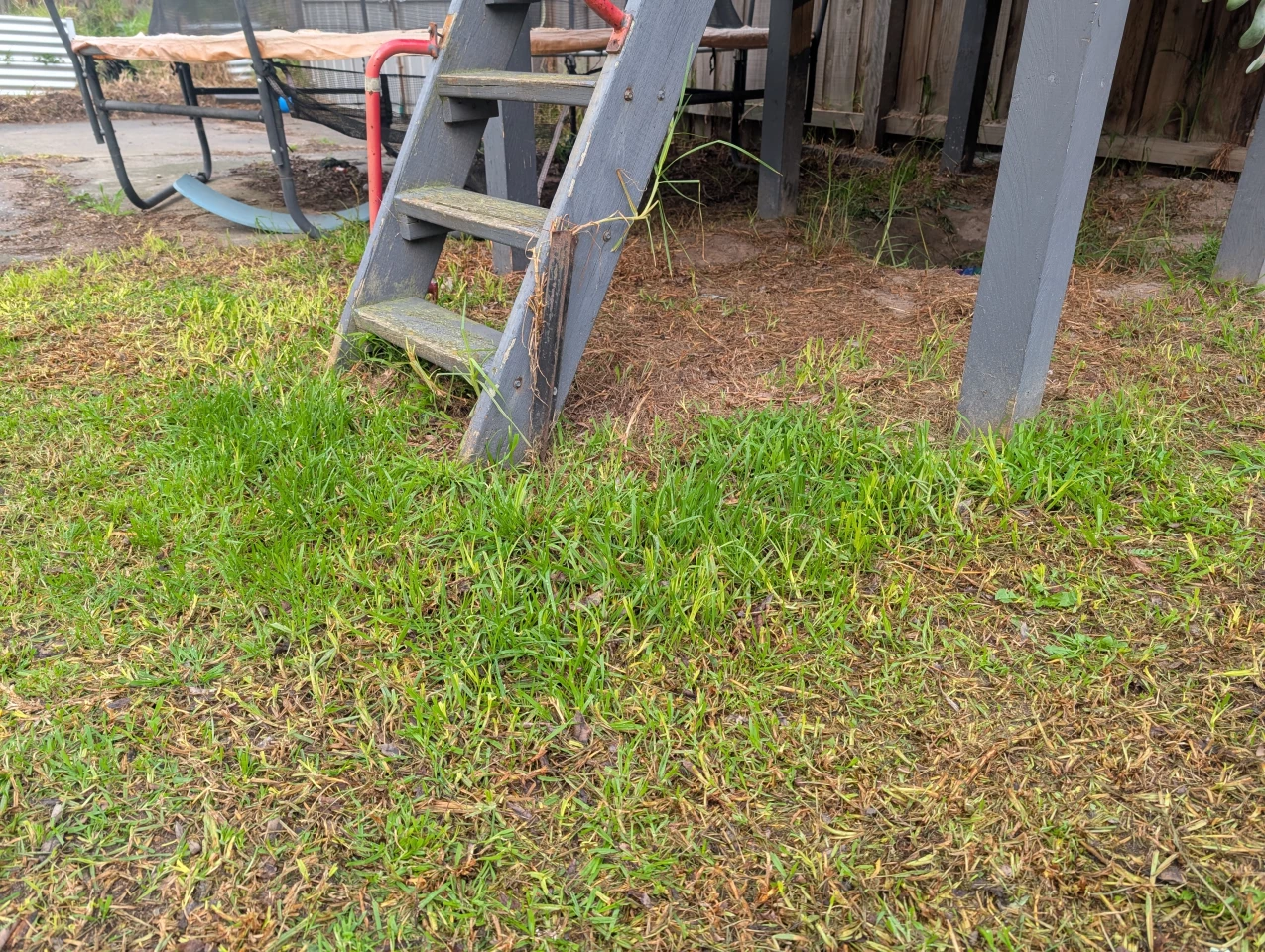
Other bits of the yard where things get complex seem to confuse it too, like the stairs to the kids' cubby house above, which have curiously spawned a decent sized L-shape of unmown grass off to the side. And despite a "ride on border" feature that's supposed to "ensure every edge is trimmed cleanly, leaving no uncut grass behind," some of the edges clearly aren't getting enough love, including the most annoying bit of grass on our block, which runs up alongside a fence out on the nature strip and somehow grows three times quicker than anything else.
Manually re-mapping each area out using remote control solves some of these issues, but the X5 certainly doesn't seem to like working close to fences. That may be a wise choice at this stage; in less than a month of action, the X5 has managed to scratch up its sports-car bodywork on both sides rubbing against branches, bricks and walls.
In terms of errors and the like, the Sunseeker X5 is relatively autonomous compared to previous machines I've tried out, and rarely gets irredeemably confused or stuck, or needs assistance. That said, it did manage to get bogged in some loose dirt at one point, and another time, it misjudged the edge of our nature strip and beached itself falling off the curb. But in general I haven't had to carry it around or rescue it much at all.
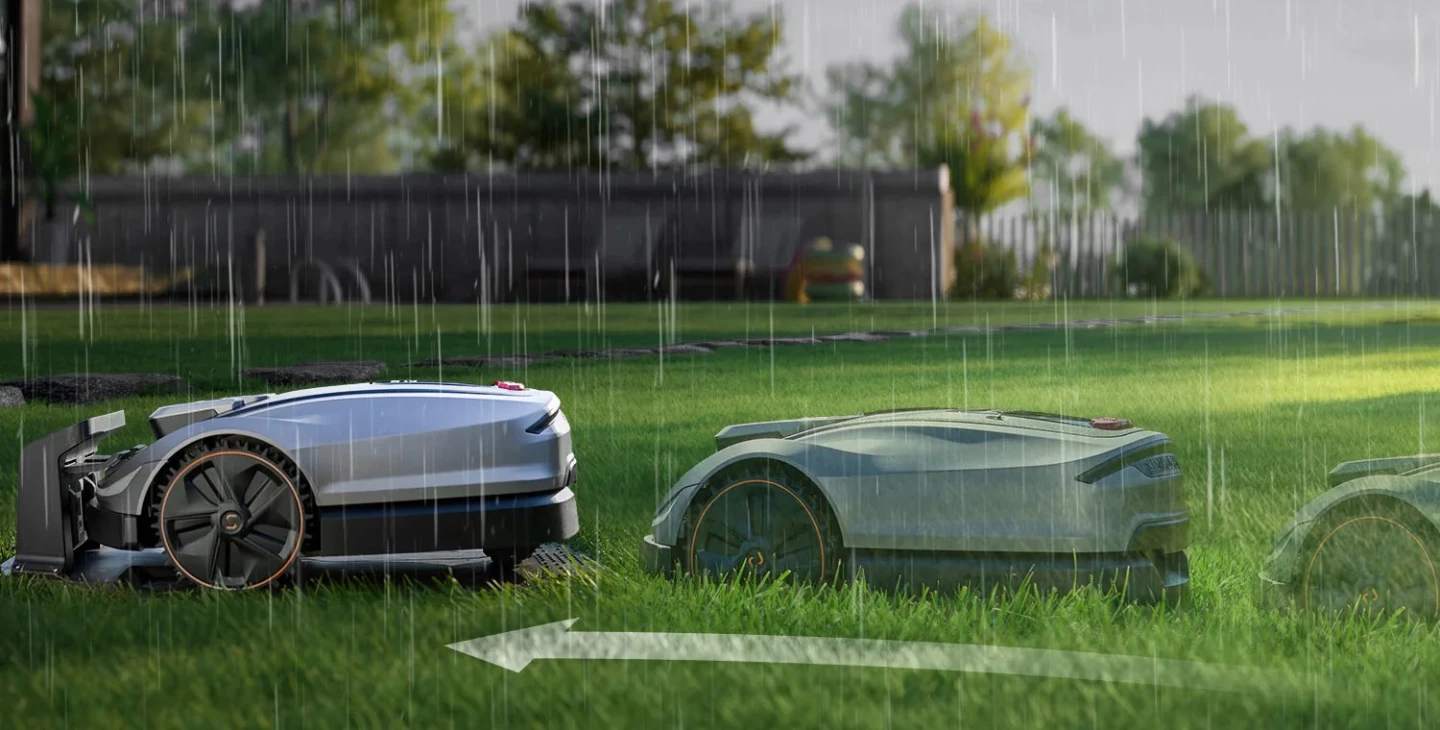
The app is reasonably painless to use – although I have to say I'm a bit puzzled by the automatic recommended mowing schedule, which allocates no more than 15 minutes a day. No matter; that's easy enough to tweak to your liking.
The Sunseeker X5 is currently retailing for US$2,199. That's on the pricey side for an RTK/vision-enabled, half-acre (0.2-ha), Chinese-brand mower, for sure – but if you don't need to handle such a huge lawn, there are deals on the 0.3-acre (0.1-ha) X3 Plus for a hair over half the price. And on the other end of the scale, you can cover three quarters of an acre (0.3 ha) with the twin-blade X7, which, thanks to a deal, costs the same as the X5 at the time of writing.
There are folk that enjoy mowing the lawn; I'm not one of them. Machines like the Sunseeker X5 can chug away regularly and reliably, taking the vast majority of that gig off your plate, and keeping your home looking neat. They're getting smarter, more accessible and easier to work with by the month at the moment.
You can still get a lot of lawn mowed by a human for $2,200 if you don't wanna heave a mower around yourself – and humans still do a tidier job. But the X5 has been a pleasure to have around, and Sunseeker's smaller devices could certainly handle my lawn at significantly lower cost ... While also giving me that lovely "we're living in the future" feeling in an uncomplicated way for once!
Source: Sunseeker
New Atlas may receive commission when you buy through our links.














